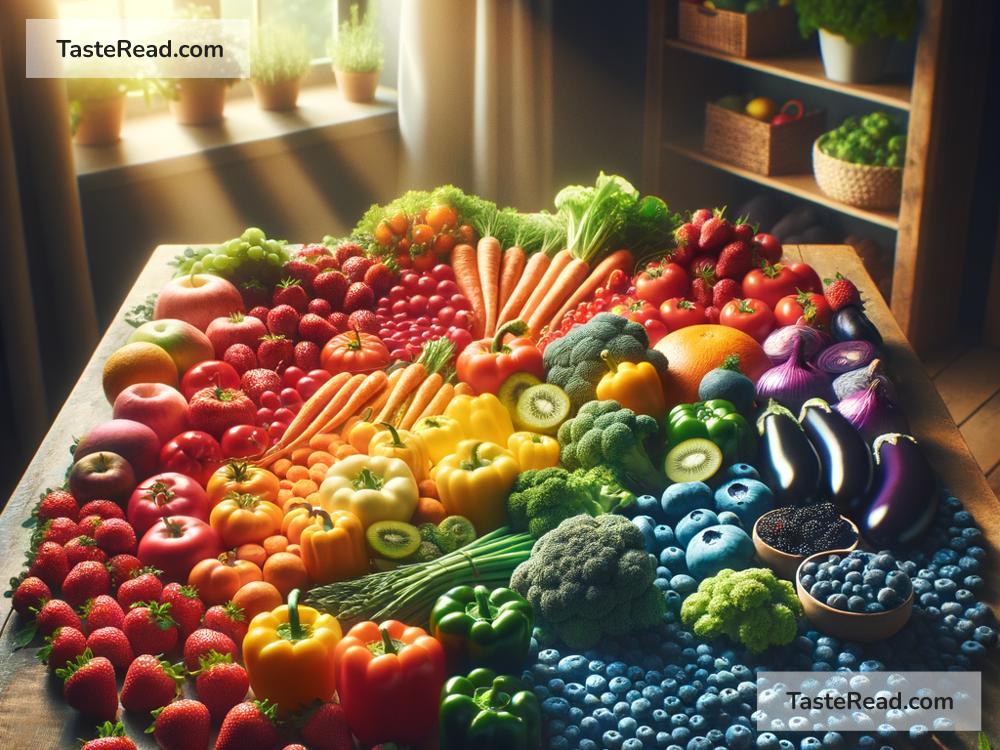The Benefits of Eating a Rainbow: Phytochemicals Explained in Simple English
Have you ever heard someone say, “Eat the rainbow”? It’s not about munching on Skittles—it’s about filling your plate with colorful fruits and vegetables that are packed with nutrients. Beyond just being a feast for the eyes, eating a wide variety of colorful produce can provide your body with a myriad of health benefits, thanks to something called phytochemicals. Don’t worry if that sounds a little complicated; we’re here to break it down in a way that makes sense!
What Are Phytochemicals?
Phytochemicals are natural compounds found in plants (the word “phyto” comes from the Greek word for plants). These tiny chemical powerhouses aren’t technically considered essential nutrients like vitamins and minerals. That means your body doesn’t rely on them for survival, but they still have incredible health benefits that can help you thrive. Phytochemicals protect plants from pests, diseases, and environmental stress—think of them as a plant’s personal defense system. Lucky for us, when we eat plants, we get to share in some of these protective benefits!
Thousands of different phytochemicals exist, and they often appear in fruits and veggies as pigments, colors, scents, or flavors. That’s one reason why eating a variety of colorful foods—the “rainbow”—is so good for you. Each color of the rainbow represents a group of phytochemicals that can help different parts of your body.
The Science of Eating the Rainbow
Let’s take a closer look at why adding colorful foods to your plate is such a smart move. Each color represents certain phytochemicals that provide unique health benefits:
Red Foods: Tomatoes, Strawberries, Red Peppers
Red fruits and vegetables often contain lycopene and anthocyanins. Lycopene is a phytochemical that can help protect your cells from damage and may even lower the risk of certain cancers, like prostate cancer. Red foods also support heart health by improving circulation and reducing inflammation.
Orange and Yellow Foods: Carrots, Sweet Potatoes, Oranges
These vibrant colors are packed full of beta-carotene and flavonoids. Beta-carotene is best known for supporting healthy vision (you’ve probably heard that carrots are good for your eyes, right?). Your body also turns beta-carotene into vitamin A, which helps keep your immune system strong and your skin glowing. Bonus: yellow and orange foods can help protect your cells from free radical damage caused by pollution or UV rays.
Green Foods: Spinach, Broccoli, Kale
Green foods are superstars because they contain chlorophyll, lutein, and isothiocyanates. Chlorophyll is the pigment that makes plants green and is thought to help with detoxifying the body. Lutein supports eye health, while isothiocyanates have cancer-fighting properties. Leafy greens like kale and spinach also boast high levels of fiber, iron, and calcium, making them excellent for nearly all aspects of your health.
Blue and Purple Foods: Blueberries, Eggplant, Purple Grapes
These darker hues owe their color to anthocyanins and resveratrol. Anthocyanins act as antioxidants, helping to prevent cell damage and reduce the risk of heart disease. Resveratrol, often found in purple grapes, may improve brain health and protect against cognitive decline. These foods are brain boosters and heart helpers!
White and Brown Foods: Garlic, Onions, Mushrooms
You might not think of white and brown foods as part of the rainbow, but their neutral color hides powerful phytochemicals like allicin and flavonoids. Garlic and onions, for example, are great for boosting your immune system and fighting inflammation. Mushrooms contain compounds that may support your immune system and promote gut health.
Why Variety Matters
When you eat a wide array of colorful fruits and vegetables, you’re giving your body a diverse range of phytochemicals. Different colors target different functions in your body—some fight inflammation, some strengthen your immune system, and others protect your heart, eyes, or skin. By enjoying a rainbow of foods, you’re creating a balanced diet that can help you stay strong and healthy.
Tips for Eating the Rainbow
If you’re not used to eating a lot of fruits and vegetables, incorporating a rainbow into your meals might feel overwhelming. But don’t worry—it’s easier than you think! Here are a few simple tips to get started:
- Add One Color at a Time: Pick one new fruit or veggie to try each week. You’ll slowly build a more colorful plate without feeling rushed.
- Mix and Match: Create salads, stir-fries, or smoothies with a variety of colors. For example, a spinach and strawberry salad or a veggie stir-fry with carrots, bell peppers, and broccoli is a tasty way to pack in multiple hues.
- Snack Smart: Swap chips or candy for colorful fruits like orange slices, blueberries, or apple slices.
- Learn What’s in Season: Seasonal produce is usually fresher, tastier, and often more affordable. Each season brings new colors for your plate!
The Takeaway
Eating the rainbow isn’t just about making your meals pretty—it’s about fueling your body with a powerful mix of phytochemicals that support your health in countless ways. Phytochemicals help protect your cells, boost immunity, reduce inflammation, and promote overall wellness. Whether you’re a fan of sweet, juicy strawberries or crunchy green broccoli, every color you add to your plate is a step toward better health.
So, the next time you plan your meals, think about painting your plate like a canvas with reds, oranges, yellows, greens, blues, and purples. Your body will thank you for the burst of color—and nutrients—that come with eating the rainbow. Bon appétit!


